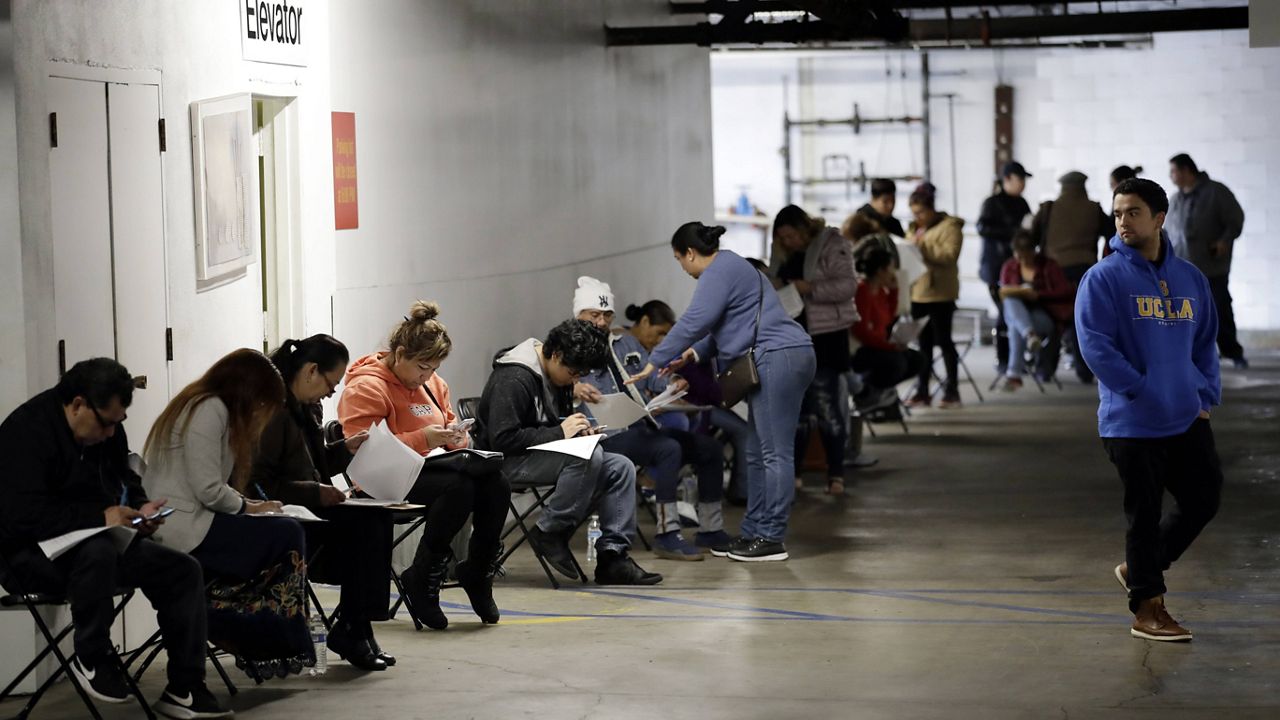LOS ANGELES (CNS) — Los Angeles County will have an estimated 354,000 fewer living wage jobs in 2021 and greater race-based economic inequities compared to the pre-pandemic economy, according to a report released Tuesday by the Los Angeles County Economic Development Corporation.
The 50-page study commissioned by the Department of Workforce Development, Aging and Community Services lays out a pathway for economic recovery over the next five years and makes the case that more than 730,000 living wage jobs need to be created for the entire county workforce to enjoy a satisfactory standard of living.
What You Need To Know
- The LACEDC report calculates a living hourly wage for a Los Angeles County adult with no children at $14.83
- According to the report, there were about 4.16 million living wage jobs countywide in 2019 employing about 85% of workers
- Of the 716,000 L.A. County jobs lost in March and April 2020, only 28.7% or 213,000 of those positions had returned by the end of September
- From February to November 2020, an estimated 20,000-plus county residents became homeless
Using the Massachusetts Institute of Technology definition of a living wage as the minimum amount of income necessary for a family's basic needs, the LACEDC report calculates a living hourly wage for a Los Angeles County adult with no children at $14.83.
According to the report, there were about 4.16 million living wage jobs countywide in 2019 employing about 85% of workers. Many of those who worked for less were in hospitality, food services, retail and arts and entertainment jobs.
The researchers recommended strategies to improve equity, retrain workers for well-paying industries, bolster capital and support services for small businesses and close education and access gaps that they say limit prosperity and growth.
"This pandemic has had a disproportionate impact on women, people of color and households with lower incomes," Supervisor Hilda Solis said. "As a former U.S. Secretary of Labor who worked to bring this nation out of the depths of the Great Recession, I know that the County of Los Angeles' response to a post-COVID economy must be infused with equity and targeted to help those who are hurting the most."
Other findings of the report include:
- of the 716,000 L.A. County jobs lost in March and April 2020, only 28.7% or 213,000 of those positions had returned by the end of September
- local unemployment was largely driven by layoffs in industries not deemed essential, especially those employing lower skilled workers, such as hospitality, retail and personal care
- of those filing for unemployment insurance in California, 65.3% were people of color, 56.9% had a high school education or less, and women filed for unemployment at a rate 6.4% higher than men
- the racial wealth gap widened: in California, 37.6% of Black workers, 26.3% of Hispanic workers and 22% of white workers filed for unemployment during the pandemic
- from February to November 2020, an estimated 20,000-plus county residents became homeless
- 62% of county businesses have less than two months cash on hand and an estimated 15,000-plus businesses have already permanently closed because of the pandemic, with tens of thousands of businesses at risk of permanent closure
Supervisor Sheila Kuehl sought a silver lining.
"In every crisis, we try to find an opportunity," she said. "L.A. County has lost a devastating number of jobs, but, in planning our recovery, we can, and should, prioritize investments in small and minority-owned businesses, stabilize workforce housing, develop job training in sectors that we know will continue to grow, expand childcare because it's so essential for working parents, and move toward providing universal broadband access."
The board approved a motion by Solis to convene a workgroup to come up with a plan for implementing the report's recommendations.
The recommendations "set a foundation for a 21st century workforce that is built on equity and living wages," said Otto Solorzano, WDACS' acting director. "COVID-19 exacerbated existing inequities in our society: people of color, women, less educated workers and those without savings all experienced a harsher impact."
The report also includes data analysis by county supervisorial districts and economic trends for each of the county's 88 cities.
The full report, "Pathways for Economic Resiliency: Los Angeles County 2021-2026," can be found here.
An 18-page executive summary can be found here.



